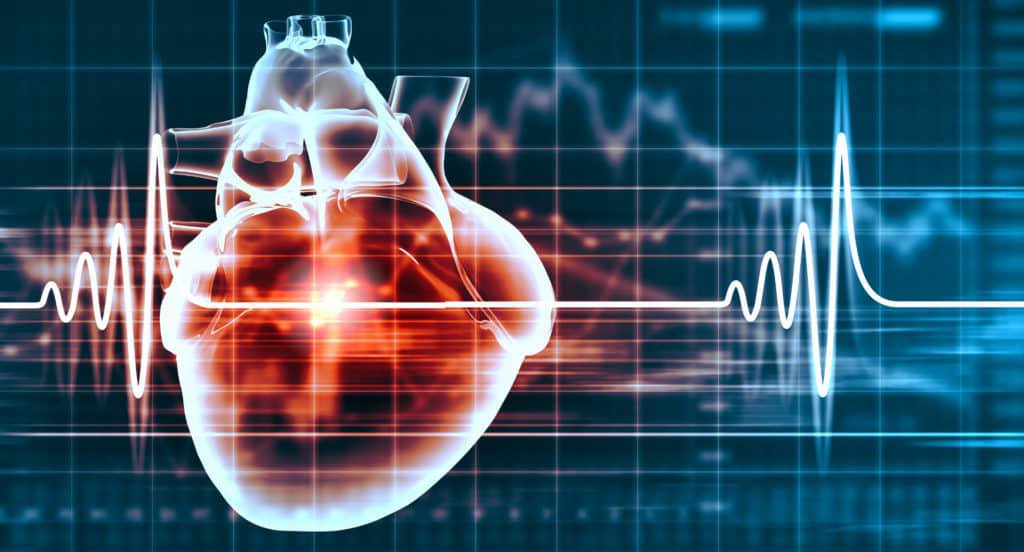ECG patterns in acute myocardial infarction
The article was written by Doctor of Radiology, Department of Diagnostic Imaging - Vinmec Central Park International General Hospital.
Acute myocardial infarction is the technical name for a heart attack. A heart attack is a life-threatening condition that occurs when blood flow to the heart muscle is suddenly cut off, causing tissue damage. This is usually the result of a blockage in one or more coronary arteries due to a buildup of plaque.
1. What is ECG?
Electrocardiogram (English name is electrocardiogram and abbreviated as ECG or EKG) is used to detect the electrical rhythm of the heart and the electrocardiogram machine will draw the waves on paper or display on a computer screen.
These waves represent several electrical waves in the heart between 60 and 100 beats per minute. The waves in the heart have their own shape. If the waves are inconsistent or don't appear as a standard wave, this is a sign of heart disease.
ECG is done when:
You have had heart disease in the past You have a medical condition that increases your risk of heart disease, such as: High blood pressure, diabetes, high cholesterol. you have chest pain, trouble breathing, feel tired or weak Periodic ECG should be performed to assess whether the patient's condition is worsening and to monitor the effectiveness of medication. An ECG is also required before any type of heart surgery is performed.
2. Symptoms of acute myocardial infarction

Nhịp tim nhanh có thể là triệu chứng của nhồi máu cơ tim cấp
The most common symptoms of an acute myocardial infarction include:
Heaviness or tightness in the chest Pain in the chest, back, jaw and other areas of the upper body that lasts more than a few minutes or goes away and rotates back Shortness of breath, sweating, nausea, vomiting Cough, dizziness Palpitations, tachycardia .
3. ECG patterns in acute myocardial infarction

Mạch vành cấp
To determine if you are having a heart attack, your doctor will listen to your heart to check for abnormalities in the rhythm and sound of your heart. Your doctor will also perform an electrocardiogram if they suspect that you've had a heart attack.
3.1 Acute coronary syndrome Acute coronary syndrome may include the following symptoms: Unstable angina, non-ST-segment elevation myocardial infarction, and lateral myocardial infarction (STEMI).
3.2 Myocardial Infarction For a patient to be diagnosed with a myocardial infarction, according to the World Health Organization, the patient needs to have at least two of the following three criteria,:
Clinical history of difficulty chest pain consistent with ischemia, such as angina, blood levels of cardiac markers (Troponin-I, CK-MB, Myoglobin) Characteristic changes in the waves of the electrocardiogram Comparing the patient's current ECG with the old one is an important part of the diagnosis. On the other hand, worrisome ECG changes should still be treated as presumptive if a previous ECG is not available.

Hình ảnh ST
3.3 Pathological Q Wave A pathological Q wave is a Q wave of more than 0.04 s duration and more than 25% the size of the posterior R waves in that lead (except for leads III and aVR). Because pathological Q waves can take many hours to develop and can persist for a long time, the presence of new pathological Q waves indicates acute myocardial infarction but the mere presence of Q waves does not necessarily mean that a new heart attack is occurring.
3.4 ST-segment elevation One of the most important findings of myocardial infarction is the presence of ST-segment elevation. The ST segment is the part of the ECG that begins at the end of the S wave and ends at the beginning of the T wave. The point where the end of the Q wave and the ST segment meet is called a J point. If the J point is 2 mm larger than baseline. , then this is consistent with ST-segment elevation myocardial infarction.
Để đặt lịch khám tại viện, Quý khách vui lòng bấm số HOTLINE hoặc đặt lịch trực tiếp TẠI ĐÂY. Tải và đặt lịch khám tự động trên ứng dụng MyVinmec để quản lý, theo dõi lịch và đặt hẹn mọi lúc mọi nơi ngay trên ứng dụng.
SEE MORE
Complications of myocardial infarction Acute myocardial infarction - A scary disease that kills faster than cancer Is a heart attack different from a stroke?
Bài viết này được viết cho người đọc tại Sài Gòn, Hà Nội, Hồ Chí Minh, Phú Quốc, Nha Trang, Hạ Long, Hải Phòng, Đà Nẵng.






